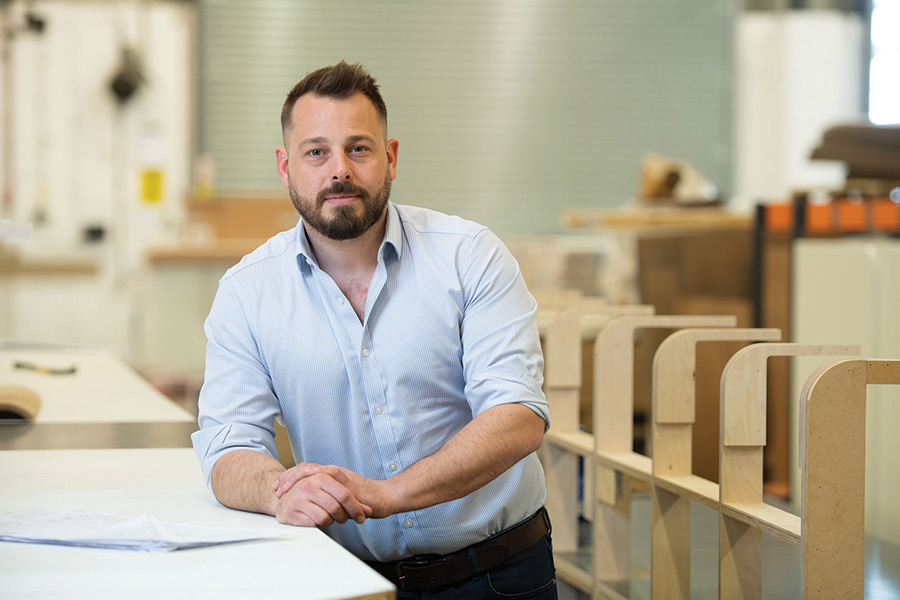By Matt Cater, Owner of FATHOM
Flooring is one retail category that resists going fully digital, and it’s for good reason. It’s an emotional purchase. Customers want to touch it, feel it, hold it up against their sofa or curtains. They want to see how it catches the light, how it feels underfoot. That tactile reassurance is hard to replicate on a screen.
Flooring is about comfort, style and how a space feels, which is why it won’t be swallowed up by the Amazons of the world anytime soon. The logistics are tricky, but more importantly, the decision-making is personal. That said, the journey typically begins online – particularly for the more well-established brands.
Much like buying a car, customers spend hours researching, comparing and configuring online, but they won’t part with serious money without seeing it in person. Flooring follows the same path. The groundwork is increasingly digital, but the final decision is made in the showroom.
So, the challenge for flooring brands is this: how do you design a customer journey where digital and physical experiences pick up where the other leaves off?
Connecting the experience
Too often, digital and physical strategies are developed in isolation. Marketing focuses on one thing, merchandising on another, and the left hand doesn’t speak to the right. This is where change is needed. Rather than building two separate journeys that converge out of necessity, we must design a single, cohesive experience from the outset. Digital tools that support physical exploration, and physical spaces that reinforce digital confidence.
Take our sample chip system. A customer begins online, requests a sample and receives it at home. They bring it into the showroom, view a larger version, and scan it to trigger a virtual visualiser. Now they can see it in a room, explore complementary colours, accessories, door bars etc. – all while holding the physical sample. That’s the kind of overlap we mean: one journey, multiple touchpoints, working together to inform, inspire and convert.
Technology as a conduit
In-store tech, such as tablets, RFID and QR codes, shouldn’t be there simply for show. It should act as a conduit between information and customer. Without it, displays can become word-heavy, irrelevant or overly reliant on staff. With it, customers can self-direct, explore and build confidence in their choices. Tech only works when it’s developed alongside the physical experience. Not as an add-on, but as part of the same strategy.
Premium brands need to focus on aligning digital and physical storytelling so that each reinforces the other. Think of it this way: a well-trained retail colleague can guide a customer through options, but not every showroom has that luxury. Digital tools can fill that gap – not by replacing people, but by supporting them. They offer consistency, clarity and a sense of control for the customer, increasing the propensity to purchase.
Synchronised storytelling
From web content to signage and POS, every element should speak the same visual and verbal language. Whether a customer is browsing swatches on a tablet or standing in front of a room set in-store, the story should feel cohesive and true to the brand. When showroom display echoes online presence, it becomes instantly familiar and unmistakably yours, leading customers past competitors on arrival in-store without hesitation.
Let’s be honest: not every customer wants the full journey. Some just need the cheapest piece of flooring to finish a rental. But others – the aspirational buyers, the design-led homeowners – they want more. They do their homework. They care about things like sustainability, longevity and brand values. For them, the journey matters and it needs to feel seamless. Consistency builds trust and trust drives conversion.
Designing with intent
Flooring brands need to stop thinking in silos. Your digital strategy isn’t separate from your showroom strategy. They’re two halves of the same experience, and they need to be designed that way. It’s not just adding tech to your showroom or polishing your website. It’s understanding how people actually shop. Customers don’t think in channels. They start online, narrow their choices and walk into a store expecting familiarity.
The brands that will lead are the ones designing with intent. They’re not waiting for digital and physical to meet by accident – they’re making sure every touchpoint leads smoothly to the next, creating a cohesive and intuitive customer experience. Not just functional. Not just clever. But genuinely helpful. And if you get it right, you won’t just convert more customers, you’ll build a brand that feels considered, reliable and worth coming back to.

